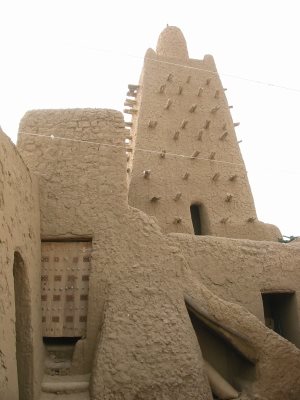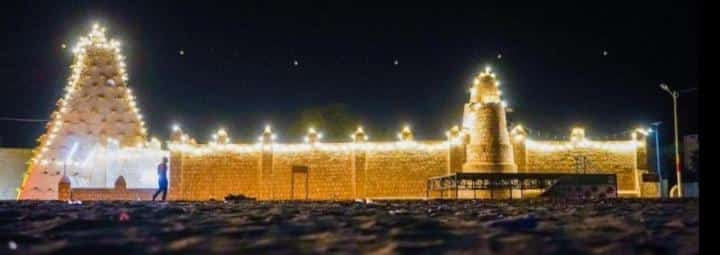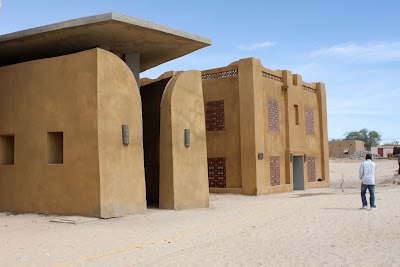Flamme de la Paix Monument (Monument Flamme de la Paix)
Overview
The **Flamme de la Paix Monument**, located in the Tombouctou Region of Mali, serves as a profound symbol of peace and reconciliation. This striking monument was erected to commemorate the end of the Tuareg Rebellion that plagued the area in the early 1990s, a conflict driven by the grievances of the Tuareg people regarding marginalization and inequality. The rebellion resulted in significant violence and instability, underscoring the urgent need for a peace initiative.
The journey toward peace began with extensive negotiations facilitated by the Malian government and international partners. After months of dialogue and compromise, a historic peace agreement was finally reached in 1996. To honor this momentous achievement and the collective commitment to maintaining peace, the **Flamme de la Paix Monument** was conceived and brought to life.
Officially inaugurated on **March 27, 1996**, the monument features a unique and elegant design that captures the aspirations of a region yearning for harmony. Central to the monument is an **eternal flame**, symbolizing the unyielding desire for peace and the ongoing efforts necessary to cultivate stability in a fragile environment. The flame burns continuously, day and night, serving as a hopeful reminder of the resilience of the human spirit.
Crafted by local artisans using traditional techniques, the **Flamme de la Paix Monument** reflects the rich cultural and artistic heritage of the Tombouctou Region. Local stones and metalwork were skillfully combined to ensure the monument could withstand the harsh desert climate. The base of the structure is adorned with intricate carvings that narrate the history and heritage of the Tuareg people, paying homage to their rich traditions.
Surrounding the main flame are several plaques and installations that convey powerful messages of unity and cooperation. These elements are designed to engage visitors, prompting reflection on the significance of peace and the shared responsibility to uphold it. Strategically located in a public space, the monument fosters community gatherings and educational events, making it a vital part of the local culture.
The creation of the **Flamme de la Paix** was more than just an architectural project; it was a collaborative effort involving local leaders, peace activists, and ordinary citizens. This collective participation ensured that the monument resonates deeply with the personal experiences and aspirations of the community it represents.
Today, the **Flamme de la Paix** stands as a testament to the power of reconciliation and the potential for a hopeful future. It attracts both locals and tourists alike, serving as a constant reminder that peace is a worthy pursuit capable of transforming societies. While the journey towards peace continues, the monument inspires a steadfast commitment to dialogue and understanding.
The influence of the monument extends beyond its physical presence; it has become a focal point for peace education and initiatives aimed at fostering dialogue among Mali’s diverse communities. Schools and organizations frequently arrange visits to the monument, incorporating its significance into their curricula and programs. Additionally, it has hosted numerous commemorative events, including annual peace celebrations that unite representatives from various ethnic and cultural backgrounds.
In conclusion, the **Flamme de la Paix Monument** in the Tombouctou Region of Mali transcends its role as a mere structure. It is a living symbol of the region’s journey toward peace, a reminder of the hardships endured, and a beacon of hope for a united future. Through its enduring presence, the monument continues to inspire efforts toward reconciliation and stands as a testament to the unwavering spirit of a people committed to peace.






